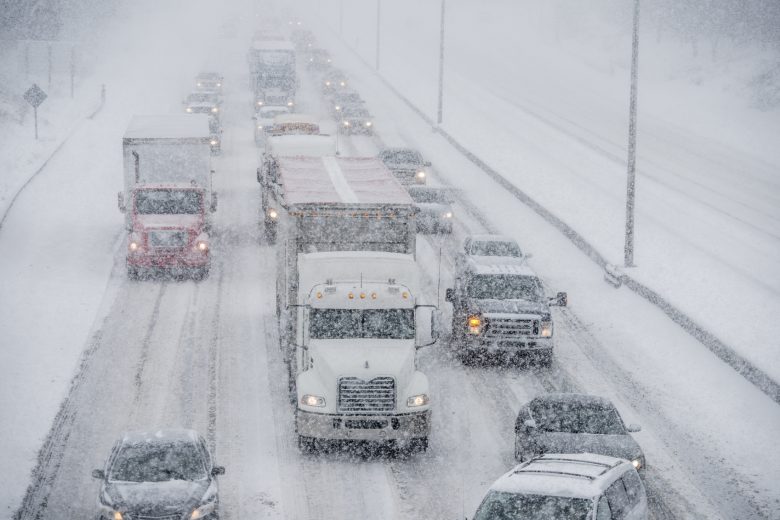A quick Internet search on winterizing your fleet will reveal dozens of lists that discuss winter tires, car batteries and preventative maintenance. But few of them provide advice on preparing drivers for winter. Take these extra steps to ready your fleet for winter by addressing the human side of vehicle safety.
Slips and Falls. Slips and falls are a huge problem in the transportation industry, especially during the winter. Failure to use three points of contact is more likely to lead to a slip and fall if the ground is covered in ice or if the running board and bar are sprayed in slush. As this guide on slips, trips and falls points out, to avoid slipping upon exiting vehicles you need to instill habits so that it becomes second nature to test footing before committing weight or to use three points of contact when descending from a truck.
Walkarounds. Many drivers rush through vehicle inspections during the winter. Given the weather, it’s hard to blame them for being tempted. Walkrounds are even more important during colder months—but it can be tough to convince your employees of it.
It’s possible to convince employees that braving the cold is worth it, but first you need to help employees:
- understand the danger of shortchanging their vehicle inspections
- see walkarounds as an integral (and mandatory) part of their job
- feel a sense of pride in doing things right
- take responsibility for their own safety
In short, it takes a commitment to a positive safety culture. If you’re looking for more immediate solutions, concentrate on recalibrating risk perceptions and providing positive reinforcement when a proper inspection is completed. Also consider providing extra time for drivers to complete their vehicle walkaround (and to warm up afterward too).
Emergency Kits. Vehicles should always be equipped with emergency items such as fire extinguishers, jumper cables, roadside flares and a first-aid kit. Several additional items should be added to vehicle emergency kits in the winter, including warm blankets, hand warmer packs, backup windshield scrapers and extra windshield washer fluid.
Emergency items should be kept in an accessible location and drivers should know how to use everything in the emergency kit. If you’re not sure when your drivers last used flares or a fire extinguisher, it’s probably time for them to practice.
Driver Decisions. Even though driving can often feel effortless, when we get behind the wheel we’re actually making a constant series of micro-decisions: What’s the best route to take? How fast should I go? When should I signal? Professional drivers can efficiently deal with making all these decisions, but winter weather forces them to take additional factors into consideration.
The end result is often decision fatigue, which is a state of mental exhaustion that can compromise the ability to make proper decisions. This can lead to unsafe driving or the failure to account for poor driving conditions, all of which elevate risk levels.
In response to decision fatigue, run through a few what-if scenarios. You can’t prepare for everything but thinking through a few key safety behaviors can make it easier to follow them in the moment. What-if planning will also attune your drivers to the possibility of things going wrong on the road, and anything that improves awareness makes them safer.
Learn more about preparing your drivers for winter roads as well as adverse conditions in other seasons by checking out one of SafeStart’s free on-demand webinars. You’ll discover how human factors training can prevent incidents on the road and improve driver safety.

